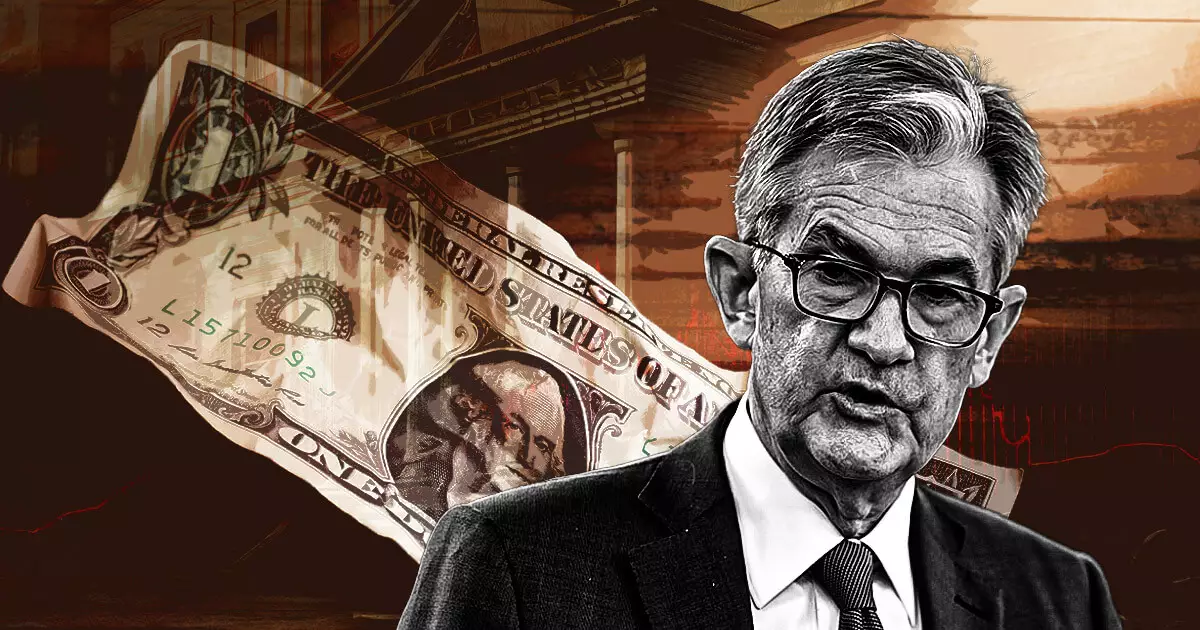The landscape of financial regulation in the United States is witnessing a significant transformation, as Federal Reserve Chair Jerome Powell’s comments on April 16th indicate a warming attitude towards regulatory frameworks for stablecoins. His assertion that both the House and Senate are revisiting legislative efforts bears a sense of urgency as these digital instruments become more entrenched in the financial ecosystem. This shift is not merely about legislative necessity; it also reflects a realization that ignoring stablecoins could impede the evolution of our banking system in the digital age.
Historically, Congress has struggled to establish a coherent set of guidelines for this category of digital assets. Powell acknowledges this legislative deadlock but optimistically claims that “the climate is changing.” This is not just wishful thinking; recent events suggest that lawmakers are increasingly paying attention to the stablecoin phenomenon, driven by their rising usage for transactions and settlements. Powell’s framing of stablecoins as “digital products with fairly wide appeal” underscores their potential to not only facilitate commerce but also to integrate more seamlessly into existing financial frameworks.
Consumer Protection: A Non-Negotiable Priority
One of the key aspects of Powell’s remarks focused on consumer protection and transparency. Stablecoins, unlike traditional currencies, operate in a largely unregulated space, often leaving consumers exposed to significant risks. Powell’s insistence on a regulatory framework that prioritizes consumer safety illustrates that the Federal Reserve recognizes the importance of not just fostering innovation but ensuring it does not come at the expense of the public’s financial security.
Consumer trust is a crucial factor for the adoption of stablecoins, and without adequate protections, this trust could quickly erode. Regulations promoting transparency would serve to bolster public confidence, ensuring that users understand how these digital assets operate and what risks they entail. An environment that favors clear guidelines not only benefits consumers but also encourages firms to innovate responsibly—striking a balance that has been sorely lacking in previous discussions.
A Shift Towards Responsible Innovation
Powell’s comments further reveal a nuanced perspective on banking’s relationship with the crypto sector. While the Federal Reserve’s previous guidance has often been characterized as conservative, Powell hinted at a willingness to relax some restrictions to allow for responsible innovation. This is a critical pivot; it signifies that the Fed is not in the business of stifling growth but rather of delineating a path through which banks can engage with digital assets without compromising safety and soundness.
However, this “responsible innovation” narrative must be approached with caution. Relaxing restrictions should not become a backdoor means of rushing the integration of digital assets into the banking system without a robust understanding of the potential ramifications. The balance between innovation and risk management is delicate, and regulatory frameworks must evolve thoughtfully to avoid repeating the mistakes of the past.
Future of Banking in a Crypto-Enabled World
Powell’s acknowledgment that digital asset activities have already found a foothold within Fed-regulated institutions signals that the landscape is changing. He notes that banks are already providing services like crypto custody, indicating a functional complexity within traditional finance that cannot be ignored. The dynamic interplay between the established banking infrastructure and emerging digital assets presents opportunities but also considerable challenges, as the risk landscape shifts with the integration of these new technologies.
What stands out is Powell’s supportive stance toward congressional efforts to create formal frameworks governing stablecoins, provided they do not stifle innovation while effectively containing risks. This positions the Federal Reserve as a proactive player in the ongoing discourse surrounding digital assets, and it sends a strong message to both the markets and innovators: we’re here to enable progress, but we won’t compromise on safety.
With stablecoins registering nearly $14 trillion in transfer volume last year—surpassing major payment networks like Visa—the urgency for a defined regulatory framework cannot be overstated. The Fed’s latest insights will likely influence upcoming discussions around significant legislative proposals like the GENIUS Act and the STABLE Act, as Congress seeks to delineate rules that both encourage growth and fortify consumer protections. The question now is whether policymakers will rise to the occasion and engage in this pivotal moment for financial regulation.


Leave a Reply